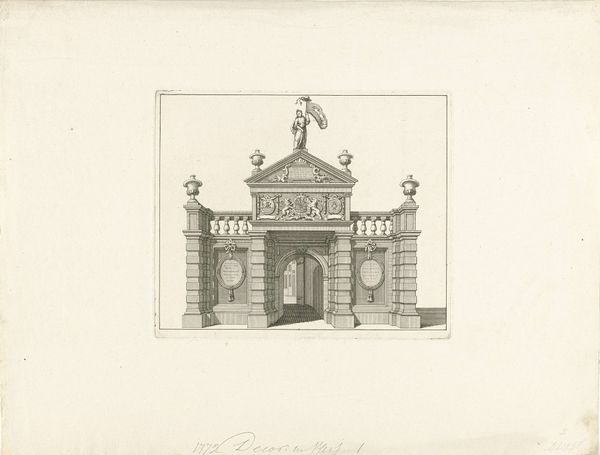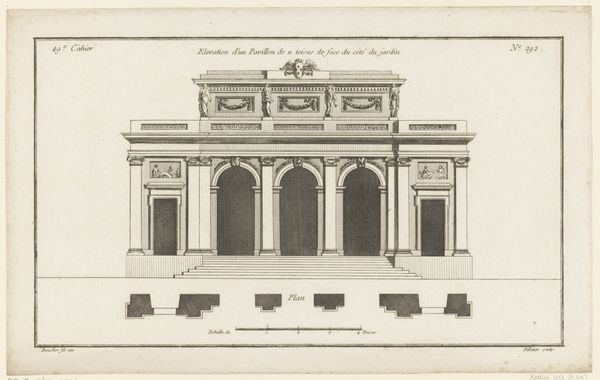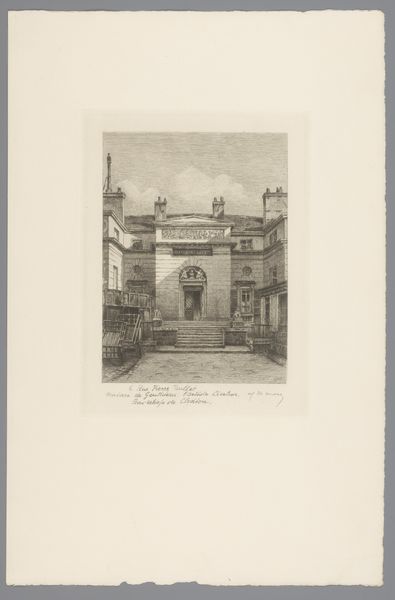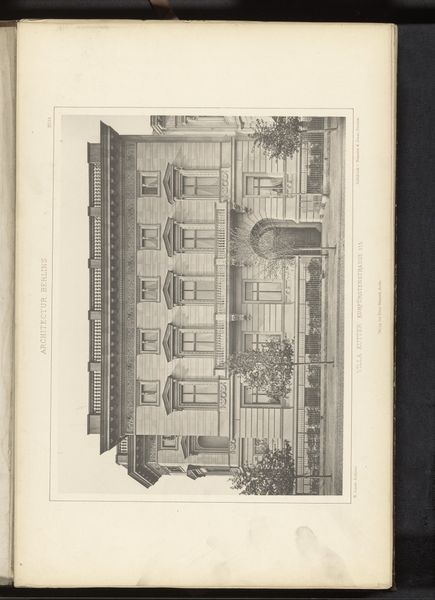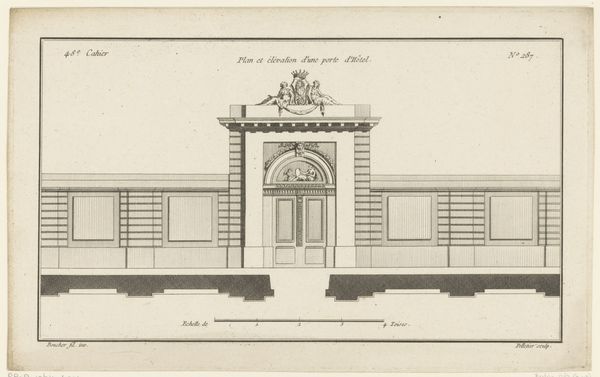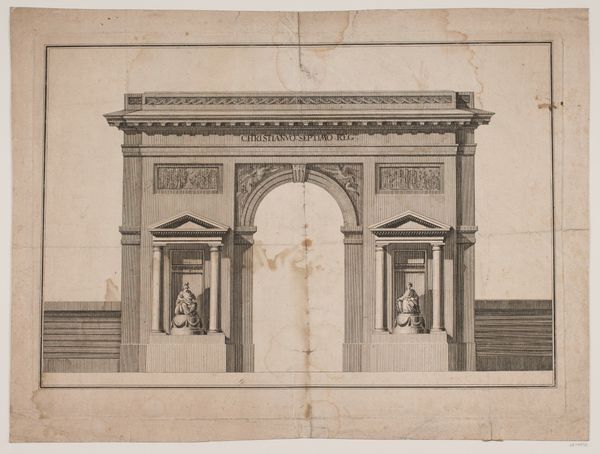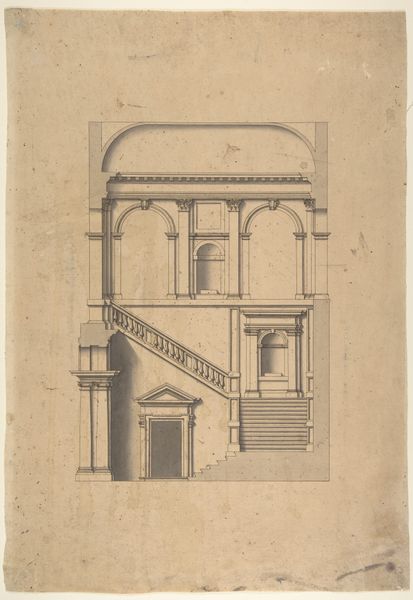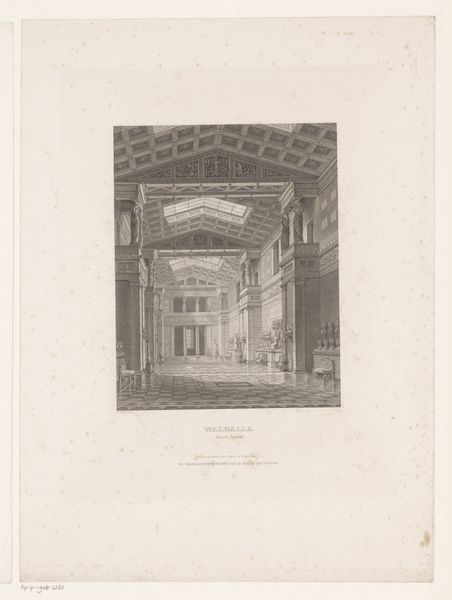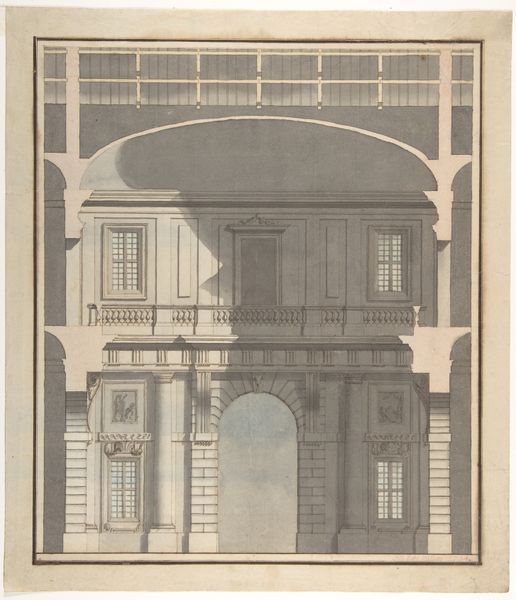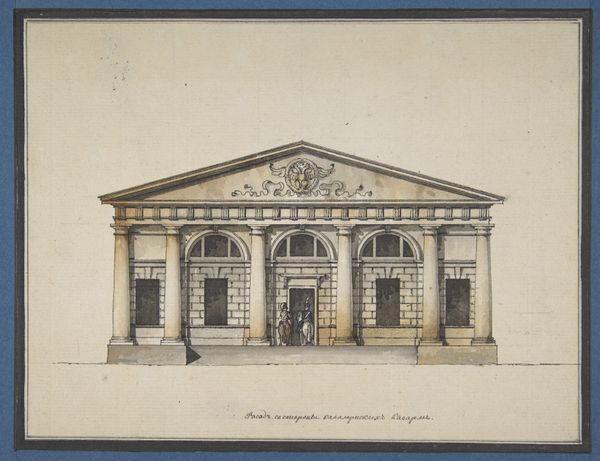
Dimensions: height 319 mm, width 397
Copyright: Rijks Museum: Open Domain
Editor: This is "Doorsnede van het paviljoen bij het Klein Trianon," created sometime between 1840 and 1900 by Jules-Paul de Garron. It's an engraving, a detailed cross-section drawing of what appears to be a concert pavilion. The architectural detail is quite impressive. What catches your eye about this particular piece? Curator: What strikes me is how this image operates as both a historical document and a piece of persuasive imagery. Neoclassicism, as seen here, wasn't just about aesthetics; it was about visually aligning the present with a glorified past. Consider the social and political climate then. How does this image of refined architecture reinforce a particular image of power and order? Editor: I see what you mean. The emphasis on geometric shapes and symmetry does give a sense of order and control, like a perfectly designed stage. Curator: Exactly. And who had access to such perfectly designed spaces? This image participates in the construction of an idealized aristocracy, a visual argument for their continued rule. What do you notice about the building’s decoration, and what associations do those motifs carry? Editor: I notice garland motifs above each window, suggesting triumph or celebration, and there is a rhythmic visual echoing that creates a balanced sense of harmony. Curator: Yes! And this idealized presentation omits any trace of the social realities and the potential discontent brewing outside the Petit Trianon’s walls. This is how art functions within power structures. So, in your view, how does displaying a drawing like this in a modern museum change its function, or perhaps challenge its original intent? Editor: Wow, that's a lot to think about! Seeing it this way definitely sheds light on how art, even architectural drawings, played a role in shaping perceptions and solidifying social hierarchies. I see how important it is to study this drawing with the understanding that is both beautiful and politically charged. Curator: Precisely. The intersection of aesthetics, power, and historical context shapes our understanding.
Comments
No comments
Be the first to comment and join the conversation on the ultimate creative platform.
